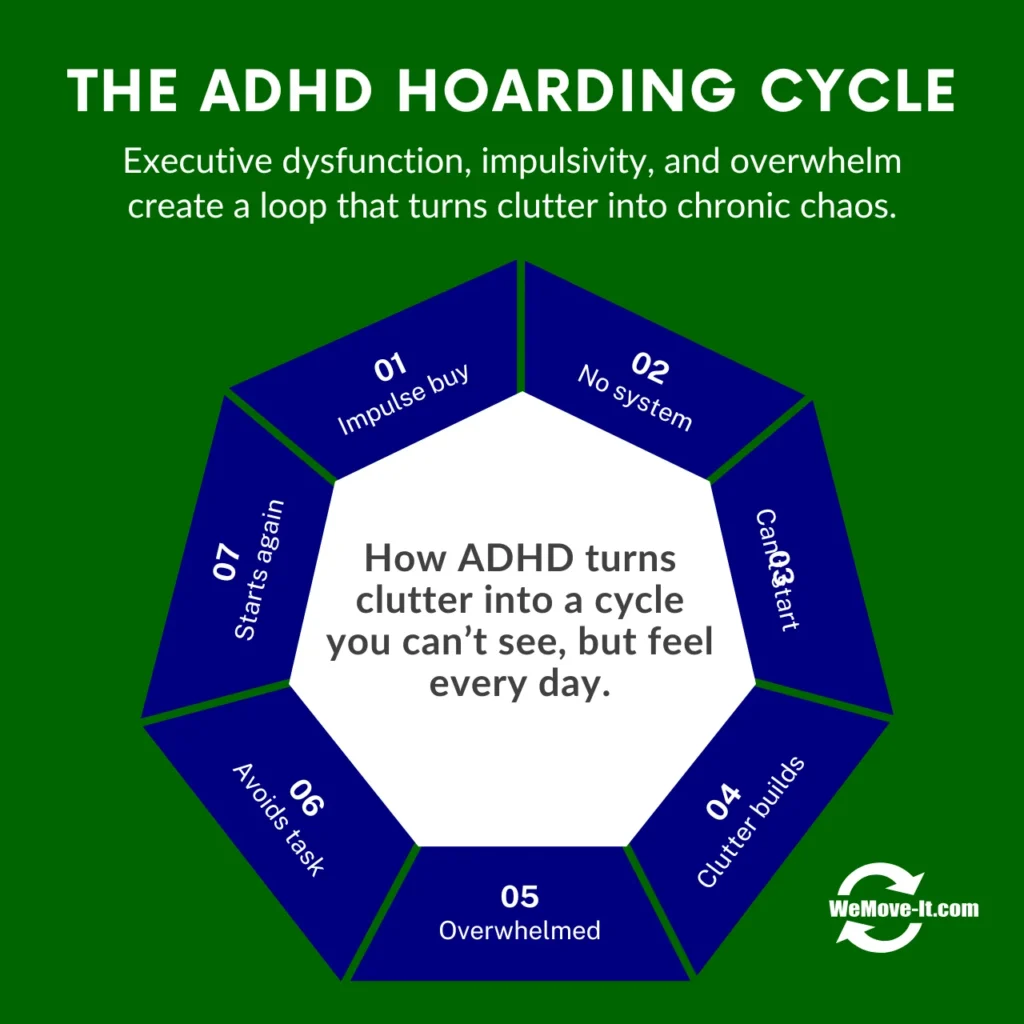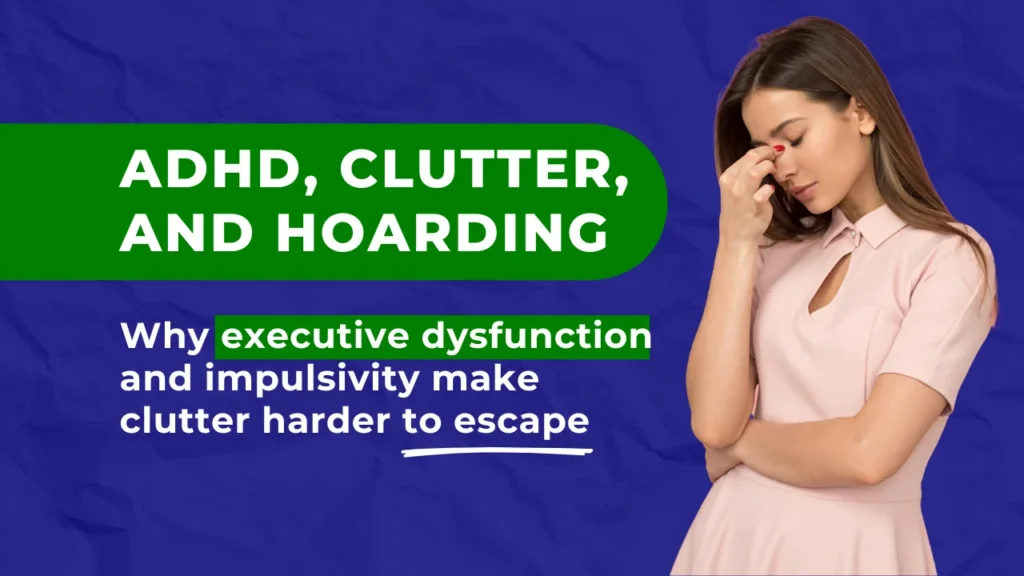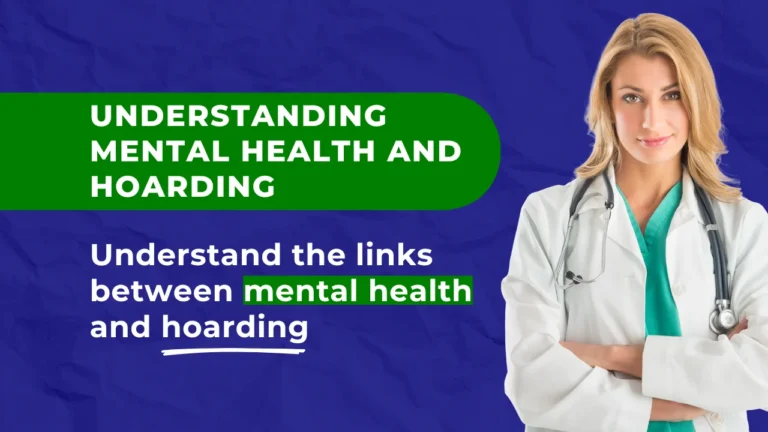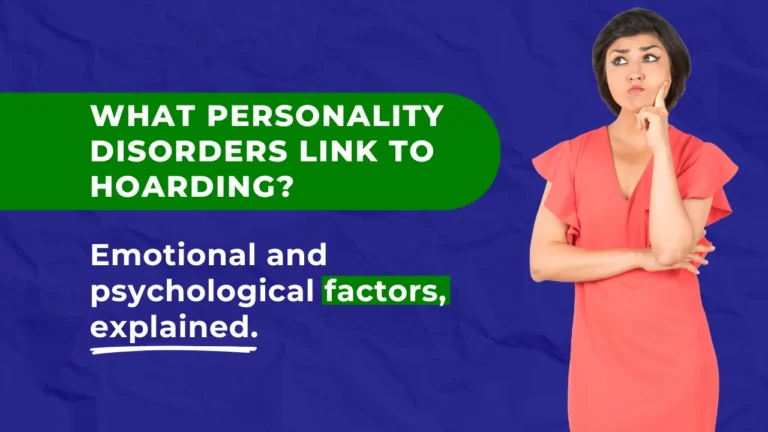You walk in and see the same thing again: piles of unopened packages by the door. A sink full of dishes. Boxes of stuff that haven’t moved in months. It’s a scene that feels all too familiar for anyone dealing with ADHD and hoarding, but the same question crosses your mind: Why can’t they just clean it up?
They’re always losing their keys. Forgetting appointments. Starting ten things and finishing none. It’s frustrating. It feels like laziness or like they just don’t care.
But what if it’s something else?
This article breaks down how ADHD and hoarding are connected and how clutter can be a symptom of a deeper struggle. Not because someone is messy on purpose, but because their brain works differently. And understanding that might just change everything.
This article breaks down how ADHD and hoarding are connected and how clutter can be a symptom of a deeper struggle. But ADHD isn’t the only factor that can lead to chronic disorganisation. To understand the broader picture, visit our guide to mental health and hoarding.
In cases of ADHD, it’s not someone being messy on purpose, but how their brain works differently. And understanding that might just change everything.
What ADHD Actually Feels Like
ADHD isn’t only being distracted or hyper. It’s a full-time battle with attention, memory, and overwhelm. Things like:
- Forgetting where you put your wallet…while it’s still in your hand.
- Starting laundry, then remembering an email, then cleaning the fridge, then…wait, where were we?
Executive dysfunction is the term for it. Basically, the brain struggles to plan, start, and finish everyday tasks. Not because of laziness or lack of effort. It’s more like the internal gears don’t always line up.
Imagine trying to build a Lego set, but the instructions are out of order and keep disappearing.
That constant disconnect, called executive dysfunction, can make hoarding more likely, because the steps to stay organized just don’t fire in order.

That’s ADHD.
Why ADHD and Hoarding Often Go Hand-in-Hand
Many ADHD clutter issues build slowly, triggered by habits that repeat daily and go unnoticed, until the home feels overwhelming. ADHD doesn’t cause clutter in just one way. It stacks up through habits that repeat.
Impulsivity and the ADHD Hoarding Loop
Impulsive hoarding with ADHD often starts with small, harmless purchases like an extra mug, a sale bin find, a ‘just in case’ item.
With ADHD, impulsive hoarding isn’t about collecting treasures. It’s about grabbing stuff before the brain has time to fully weigh whether it’s needed. That might mean:
- Buying things just because they’re on sale
- Holding onto freebies or “useful” junk
- Stockpiling supplies for hobbies that may never start

The clutter grows quietly, one impulse at a time.
Disorganization and ADHD Clutter Issues
ADHD brains struggle to build systems. So even if the intention to clean is there, the follow-through gets lost.
- Items don’t have a clear home
- Things get misplaced often
- Lost items lead to duplicates and then triplicates
- A person with ADHD might genuinely not realize they already own three identical can openers. Disorganization creates a loop, and the clutter keeps compounding.
Decision Paralysis

Sorting through stuff can feel like solving a math problem with no right answer.
- Should I keep this? Will I need it later? What if I forget it exists?
- Do I toss it? Donate it? Recycle? Wait, is this even recyclable?
- So instead of making a decision, the brain stalls. And the pile stays.
Difficulty throwing things away with ADHD isn’t always just emotional attachment, it’s often about mental gridlock.
Task Initiation & Follow-Through
Most people with ADHD aren’t refusing to clean. They just can’t get started. Or if they do, they burn out halfway through.
- “I’ll clean that shelf later” turns into a year of walking past it
- Tidying half the living room becomes an avalanche of unfinished piles

Starting is hard. Finishing is harder. And every unfinished job adds to the sense of failure, making the next one feel even more impossible.
What Makes ADHD and Hoarding So Hard to Untangle?
This isn’t the kind of hoarding you see on TV.
There’s often no deep emotional bond to the items. It’s not about obsessively collecting or refusing to part with a lifetime of memories.
ADHD-related clutter tends to stem from overload, not obsession. It’s about:
- A brain that can’t keep up with everyday decisions
- A body too tired to tackle unfinished messes
- A cycle of shame and masking, trying to appear “put together” on the outside while drowning inside
For many, the clutter itself becomes a source of embarrassment. But it keeps piling up. Because the tools to stop it just aren’t in place.
How to Help Someone Struggling with ADHD and Hoarding
First off, shame doesn’t help. Pressure doesn’t either. This isn’t about effort or willpower.
What actually helps:
- Keep it visual. Open bins, labels, color-coded zones. Out of sight usually means out of mind.
- Small wins matter. One drawer. One shelf. One visible improvement.
- Routines over marathons. Ten minutes a day is more sustainable than a weekend overhaul.
- Don’t take over. Collaborate, don’t control. Ask, don’t demand.
And if the space has become unsafe, or if the person is clearly stuck, it’s okay to suggest professional help. Just be gentle. Emphasize support, not judgment.

When to Consider Professional Help for ADHD and Hoarding
If clutter has taken over, whether in Hamilton, Stoney Creek, or a small apartment in Toronto, WeMove-It.com offers compassionate cleanup services with zero judgment. For local support, check out our Hoarding Cleaning Services in Burlington for detailed information on how we can help.
We understand ADHD, executive dysfunction, and how easily things can spiral. Our team handles hoarding and cluttered homes with care, patience, and zero judgment.
Frequently Asked Questions About ADHD and Hoarding
Absolutely. While not everyone with ADHD hoards, impulsive buying, executive dysfunction, and chronic disorganization can snowball into hoarding-like environments.
ADHD-related clutter is often the result of executive dysfunction, impulsive purchases, or difficulty starting and finishing tasks. Hoarding disorder usually involves a stronger emotional attachment to items and a clinical inability to discard possessions, even those without value.
It’s often not only sentiment, it’s also mental gridlock. Executive dysfunction makes it hard to make small decisions, like whether to keep, toss, or donate. That “stuck” feeling can turn into chronic clutter.
It can be. Impulse control issues with ADHD sometimes lead to buying things quickly, collecting “just in case” items, or stockpiling supplies for hobbies that never get started. Over time, these habits create clutter that’s hard to manage.
Start small. Focus on one drawer or shelf at a time, keep storage visual and accessible, and don’t shame them. ADHD brains respond better to routines, not pressure. When in doubt, offer help. Not control.



